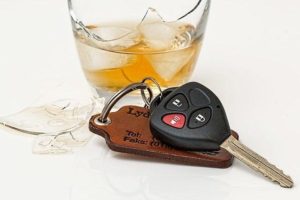Motorcycles offer a thrilling and exhilarating mode of transportation, but they also come with inherent risks. Motorcycle crashes can result in severe injuries or even fatalities. However, by prioritizing safety and adopting proactive measures, both motorcyclists and other motorists can play a vital role in preventing accidents on the road. In this blog, we will explore effective strategies for motorcycle crash prevention, focusing on visibility, safe riding practices, adherence to traffic laws, and the crucial role of motorists in looking out for motorcyclists.
Be Seen, Stay Safe: Enhancing Visibility on the Roads
To prevent accidents, it is essential for motorcyclists to be visible to other motorists. Here are some key tips to enhance visibility:
Wear high-visibility gear: Opt for brightly colored helmets, jackets, and vests that make you stand out on the road. Reflective materials can significantly increase your visibility, especially during low-light conditions.
Use proper lighting: Ensure that your motorcycle’s headlights, taillights, and turn signals are in good working condition. Consider adding additional lighting accessories, such as auxiliary lights or LED strips, to increase your visibility from different angles.
Lane positioning: Position yourself in a way that maximizes your visibility to other drivers. Ride in the lane where you are most visible, avoiding blind spots of larger vehicles whenever possible.
Signal your intentions: Use your turn signals well in advance to communicate your movements to other drivers. Make clear and deliberate hand signals when necessary.
Ride with Safety in Mind: Adopting Best Practices for Motorcycle Crash Prevention
Safe riding practices are essential for both new and experienced motorcyclists. Here are some important tips to consider:
Wear protective gear: Always wear a DOT-approved helmet, along with protective clothing, gloves, and sturdy footwear. Proper gear can minimize the risk of head injuries and protect your body in case of a crash.
Maintain your motorcycle: Regularly inspect your motorcycle for any mechanical issues, including brakes, tires, lights, and signals. Follow the manufacturer’s maintenance guidelines to ensure optimal performance and safety.
Practice defensive riding: Anticipate potential hazards by constantly scanning the road ahead, checking your mirrors, and staying alert to the movements of other vehicles. Maintain a safe following distance and be prepared to react to sudden changes in traffic or road conditions.
Develop your riding skills: Enroll in a motorcycle safety course to enhance your riding skills and knowledge. These courses offer valuable insights into defensive riding techniques, emergency maneuvers, and hazard awareness.
For a free legal consultation,
call 1-800-668-6729
Follow the Law: Adhering to Traffic Regulations
Motorcyclists must comply with traffic laws to ensure their safety and the safety of others. Some crucial aspects to consider include:
Observe speed limits: Speeding significantly increases the risk of accidents and reduces the time available to react to unexpected situations. Adhere to posted speed limits and adjust your speed according to road and weather conditions.
Use designated lanes: Always use designated motorcycle lanes when available. Avoid weaving between lanes or sharing lanes with other vehicles, as it increases the likelihood of collisions.
Signal and obey traffic signs: Signal your intentions and adhere to traffic signs and signals, including stop signs, yield signs, and traffic lights. Respect right-of-way rules and yield to pedestrians and other vehicles as required.
Avoid distracted riding: Refrain from using mobile devices, adjusting music, or engaging in any activities that distract you from the road. Maintain your focus and concentration at all times.
The Vital Role of Motorists: Looking Out for Motorcyclists
Motorists must also be proactive in preventing motorcycle accidents. Here’s how they can contribute to overall road safety:
Check blind spots: Motorists should always check their blind spots before changing lanes or making turns. Motorcycles can easily be hidden from view, so it’s crucial to take extra caution and double-check for any approaching motorcycles.
Maintain a safe distance: Leave an adequate following distance when driving behind motorcycles. Motorcycles can stop more quickly than larger vehicles, and maintaining a safe distance allows both parties to have enough time to react in case of sudden stops or changes in traffic.
Use mirrors effectively: Utilize your side and rearview mirrors frequently to be aware of the presence of motorcycles around you. Take an extra moment to ensure the coast is clear before merging or changing lanes.
Use turn signals: Signaling your intentions early and clearly allows motorcyclists to anticipate your movements and adjust accordingly. Always use your turn signals well in advance before making any turns or lane changes.
Be aware of weather conditions: Inclement weather affects all motorists, including motorcyclists. Exercise additional caution and be mindful of the potential challenges motorcyclists face during rain, fog, or strong winds.
Be patient and courteous: Motorcycles may need to make lane adjustments or take up a full lane for safety reasons. Patience and respect for their space and rights on the road can go a long way in preventing accidents and promoting a harmonious coexistence between different road users.
Motorcycle crash prevention requires a collective effort from both motorcyclists and other motorists. By focusing on enhancing visibility, adopting safe riding practices, adhering to traffic laws, and remaining vigilant on the road, we can significantly reduce the risk of accidents and protect lives. Remember, it is not just the responsibility of motorcyclists to stay safe; motorists must actively look out for motorcyclists and treat them with respect and consideration. Let’s prioritize safety, mutual awareness, and cooperation on the roads to create a safer environment for everyone. Together, we can make a positive impact and ensure that every ride is a safe and enjoyable one.
Call or text 1-800-668-6729 or complete a Free Case Evaluation form


